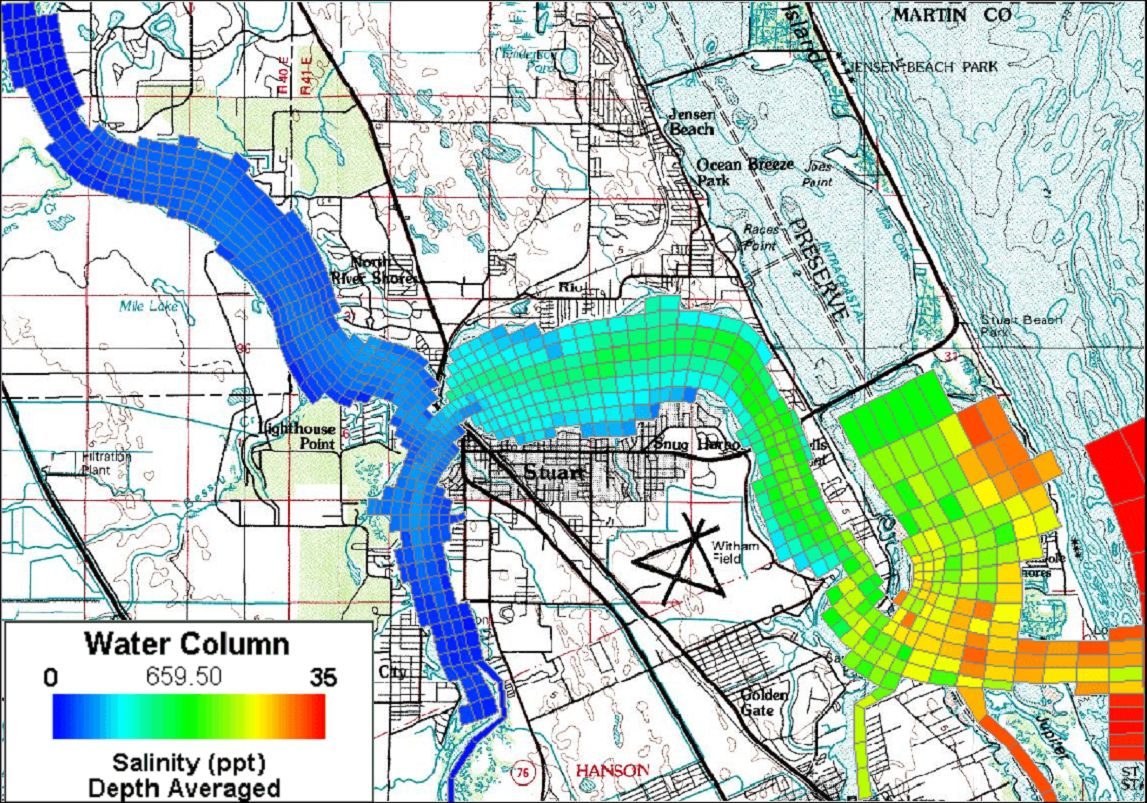Challenges with Salinity Intrusion
Salinity intrusion is of growing concern in many regions where natural fresh water flows are impacted because of direct human activity such as urbanization and dam construction, and sea-level rise due to climate change. Estimating and evaluating the nature of the salinity intrusions on a seasonal and multi-year basis is a complicated process for which numerical modeling can bring great benefits.
Solutions Provided by EEMS
EFDC+ accurately models fresh and saline water interactions in estuaries and river systems allowing users to develop well calibrated models of their waterbodies and evaluate the impacts of estimated climatic changes. Using the EFDC+ Sigma-Zed model allows highly realistic simulations of the stratification in the waterbody in comparison to similar modeling systems. EE provides a host of post-processing tools to better analyze and interpret the model results.
Examples of Studies Done with EEMS
Ocean Pointe Salinity Study
An EFDC model of a coastal region near Ocean Pointe, Hawaii, was developed with the objective of assessing the impact of major freshwater storm drains on the salinity patterns. These were evaluated relative to the salinity standards (>31.5 ppt) for coral reefs in the vicinity. The EFDC model was linked to the radiation shear stresses and other wave results from a REF/DIF model.
St. Lucie Estuary, Florida, USA
The objective of this modeling study was to develop a 3-dimensional hydrodynamic, salinity and temperature model to evaluate the effect of freshwater inflows, particularly high flow releases from Lake Okeechobee, on salinity distributions in the estuary. High flow events, by diluting salinity levels, adversely impact biologically sensitive habitats such as oyster beds and stands of submersed aquatic vegetation.
Lower St Johns Estuary Salinity Intrusion Study
The Jacksonville Harbor feasibility study (USACE, 2014) demonstrated that the partially-stratified LSJR estuary required a three-dimensional hydrodynamic model to accurately simulate salinity variations with depth. The purpose of this study was to evaluate potential impacts of salinity intrusion into the estuary on the aquatic habitat and create a basis for evaluating multiple management scenarios to support decision-making. To model the LSJR estuary, the EFDC+ hydrodynamic and salinity model was utilized.
Download Example EE Models
Download an example model and run with the free EEMS Demo Version.
This example model of the Tra Khuc Estuary in Vietnam demonstrates the coastal modeling capabilities of EEMS and shows salinity intrusion into the estuary. It also includes full sediment transport simulation.






